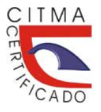Biological activity and methods of extraction of essential oils de Pimenta dioica (L.) Merril (MYRTACEAE)
Keywords:
Biological activity, Methods of extraction, Oil essentialAbstract
The essential oils are complex mixtures of compound volatile, mainly terpenes that are part of the secondary metabolism of the plants. The present investigation work has as objective to analyze the information related with the biological activity of the essential oils of Pimenta dioica (L.) Merril (Myrtaceae), keeping in mind for it, the chemical composition of the essential oils, the extraction methods, as well as its activity antifungal, antimicrobiana and insecticide. For he/she is carried out it an analysis of the experiences of several carried out investigations so much at national level as international, concluding that the method of extraction of the essential oils of Pimenta dioica (L.) Merril more indexed it is the hidrodestilación method, since it is the simplest method of reproducing at laboratory level. Although he/she also stands out the combination of the extraction with the team Soxhlet, attended with Ultrasound and Maceration using the solvents n-hexane, ethyl acetate and methanol. With regard to the components that contain the essential oils of Pimenta dioica (L.) Merril, it is evidenced that the monterpenes and phenylpropanoids are in more proportion, being their main component the eugenol (more than 70 %). In a general way, the essential oils of Pimenta dioica (L.) Merril they have demonstrated a good potential for the antifungal, antimicrobianas, as well as insecticide activities, obtaining percentages of mortality between the 50 and 100 %, in different application dose.
Downloads
References
ACOSTA, J. E. (2022). Efecto biológico de semillas y aceite esencial de Pimienta dioica Merrilill (pimienta chapa) sobre Callosobruchus maculatus (gorgojo del garbanzo). Informe final de tesis de Bachiller de Pregrado. Universidad Nacional San Luis Gonzaga.
AHANGARI, H. … [et al.] (2021). Supercritical fluid extraction of seed oils – A short review of current trends. Trends in Food Science & Technology, No. 111, pp. 249-260. Disponible en: https://doi.org/10.1016/j.tifs.2021.02.066. Visitado: 10 de febrero 2023.
ARAVIND, S. … [et al.] (2021). Investigation on algae oil extraction from algae Spirogyra by Soxhlet extraction method. Materials Today: Proceedings, No. 43, pp. 308–313. Diponible en: https://doi.org/10.1016/j.matpr.2020.11.668. Visitado: 02 de marzo de 2023.
BASAID, K. … [et al] (2020). Biological activities of essential oils and lipopeptides applied to control plant pests and diseases: a review. International Journal of Pest Management. Vol. 23, No. 4, pp. 1-24.
BHAVANIRAMYA, S. (2019). Role of essential oils in food safety: Antimicrobial and antioxidant applications. Grain & Oil Science and Technology, Vol. 2, No. 2, p. 50.
BRUNO, E. … [et al.] (2021). Ultrasound assisted extraction of bioactive compounds from BRS Violet grape pomace followed by alginate-Ca2+ encapsulation. Food Chemistry, No. 338, pp. 128-141.
CARBAJAL, R. H. y CHAHUARA, Y. B. (2022). Determinación de terpenos totales y capacidad Inhibitoria de radicales libres DPPH del aceite esencial de Artemisia absinthium l. (ajenjo), Ecotipo Chiguata, Arequipa 2021. Trabajo de grado. Universidad Privada Autónoma del Sur.
CARÍAS, F. K. (2017). Evaluación del rendimiento de la extracción y caracterización fisicoquímica del aceite esencial obtenido de las hojas y frutos de la pimienta gorda (Pimenta dioica (l.) Merrilill), cultivada en alta Verapaz y Petén realizado a escala laboratorio. Trabajo de Graduación. Universidad de San Carlos de Guatemala.
D’AGOSTINO, M. … [et al] (2019). Essential Oils and Their Natural Active Compounds Presenting Antifungal Properties. Molecules. Vol. 24, No. 20, pp. 3713-3745.
DIÁNEZ, F. … [et al] (2018). Screening of antifungal activity of 12 essential oils against eight pathogenic fungi of vegetables and mushroom. Letters in Applied Microbiology. Vol. 67. No. 4. pp.400-410.
DIAS, A. L. B., AGUIAR, A. C. de y ROSTAGNO, M. A. (2021). Extraction of natural products using supercritical fluids and pressurized liquids assisted by ultrasound: Current status and trends. Ultrasonics Sonochemistry, No. 74, 105584. Disponible en: https://doi.org/10.1016/j.ultsonch.2021.105584. Visitado: 10 de febrero 2023.
DUARTE, A. S. …[et al.] (2020). Extracción de sustancias bioactivas de Pleurotus ostreatus (Pleurotaceae) por maceración dinámica. Acta Biológica Colombiana, Vol. 25, No. 1, pp. 61–74. Disponible en: https://doi.org/10.15446/abc.v25n1.72409. Visitado: 16 de febrero 2023.
EVERTON, G.O. ...[et al.]. (2020). Chemical characterization, antimicrobial activity and toxicity of essential oils of Pimenta dioica L. and Citrus sinensis L. Osbeck. Research, Society and Development, Vol. 9, No. 7, pp. 1-18, e803974842.
FUENTES, V. … [et al.] (2000) Sobre la multiplicación de Pimenta dioica (L.) Merrilil. Revista Cubana de Plantas Medicinales, Vol. 5, No. 2, pp. 51-56.
GOMES, P. R. ... [et al.] (2022). Composición química y actividad larvicida del aceite esencial de hojas de Pimenta dioica. Boletín Latinoamericano y del Caribe de Plantas Medicinales y Aromáticas, Vol. 21, No. 2, pp. 207-214.
GONZÁLEZ, O., JIMÉNEZ, L., y SUÁREZ, M. L. (2019). Formulación de un fungicida a base de aceite esencial de Pimenta dioica L. contra hongos del género Aspergillus evaluado en café verde. Trabajo de Culminación de Estudios. Instituto Tecnológico de Veracruz.
GORI, A. … [et al.] (2021). Development of an innovative maceration technique to optimize extraction and phase partition of natural products. Fitoterapia, No. 148, 104798. Disponible en: https://doi.org/10.1016/j.fitote.2020.104798. Visitado: 10 de febrero 2023.
JIMÉNEZ, L. (2018). Formulación de un fungicida a base de aceite esencial de Pimenta dioica L. contra hongos del género Aspergillus evaluado en café verde. Tesis de Maestría. Instituto Tecnológico de Veracruz.
KALIAMURTHI, S. (2019). Synergism of essential oils with lipid based nanocarriers: emerging trends in preservation of grains and related food products. Grain & Oil Science and Technology, Vol. 2, No. 1, p. 22.
LUICHO, M. L. y ROJAS, L. F. (2020). Actividad insecticida de los aceites esenciales de las plantas para el control de coleópteros de los granos agrícolas almacenados: Revisión Sistemática. Tesis para obtener el título profesional de Ingeniero Ambiental. Universidad César Vallejo.
MADRUGA, M. (2020). Estudio de la composición química de productos seleccionados de plantas de la familia Myrtaceae con actividad insecticida sobre Sitophilus oryzae L. Trabajo de Diploma. Universidad Central Marta Abreu de Las Villas.
MARSOUL, A. … [et al.] (2020). Determination of polyphenol contents in Papaver rhoeas L. flowers extracts (soxhlet, maceration), 55 antioxidant and antibacterial evaluation. Materials Today: Proceedings, No. 31, pp. S183-S189. Disponible en: https://doi.org/10.1016/j.matpr.2020.08.082. Visitado: 10 de enero de 2023.
MAZZUTTI, S., PEDROSA, R. C. y SALVADOR, S. R. (2021). Green processes inFoodomics. Supercritical Fluid Extraction of Bioactives. Comprehensive Foodomics, Vol. 2. No. 1. pp. 725-743.
MEDINA, C. A. (2022). Actividad repelente e insecticida de aceites esenciales de plantas medicinales. Trabajo de titulación. Universidad Técnica de Ambato.
MENG, X. … [et al.] (2021). Electro-membrane extraction of lithium with D2EHPA/TBP compound extractant. Hydrometallurgy, No. 202, 105615. Disponible en: https://doi.org/10.1016/j.hydromet.2021.105615. Visitado: 25 de febrero de 2023.
MIÑO, J. E., PÉREZ, A. y BENÍTEZ, I. (2018). Diseño de procesos para la obtención de aceites esenciales de pimenta racemosa y morinda citrifolia. Posadas: Edunam-Editorial Universitaria de la Universidad Nacional de Misiones.
PÉREZ, Y. … [et al.] (2022). Myrtaceae como alternativa para el control de Sitophilus oryzae L. Revista Universidad y Sociedad, Vol. 14, No.4, pp. 107-116.
PÉREZ, Y. … [et al.] (2019). Actividad biológica de extractos de pimenta dioica l Merrilill sobre Sitophilus Oryzae L. Universidad y Sociedad, Vol. 11, No. 1, pp. 369-375.
PÉREZ, Y. … [et al.] (2020). Myrtaceae alternativa para el control de plagas. Revista Científica Agroecosistemas, Vol. 8, No. 3, pp. 33-36.
ROJAS, J., PEREA, J., y ORTIZ, C. (2019). Compuestos con potencial aplicación biotransformación de geraniol y pineno. Salud UIS, Vol. 41, pp. 251-258.
ROMERO, M. (2018). Usos tradicionales y actuales de los aceites esenciales. Trabajo de fin de grado. Universidad de Sevilla.
SAROJ, A. … [et al] (2020). Natural Remedies for Pest, Disease and Weed Control. Chukwuebuka Egbuna, Barbara Sawicka, Academic Press. Capítulo 6. Phytochemicals of Plant-Derived Essential Oils: A Novel Green Approach Against Pests.
TARIQ, A. … [et al] (2019). A comprehensive review of the antibacterial, antifungal and antiviral potential of essential oils and their chemical constituents against drugresistant microbial pathogens. Microbial Pathogenesis. No. 134. pp.1-7.
VALENCIA, M. Z. (2018). Métodos de extracción de aceite esencial de la semilla de moringa (Moringa oleífera). Tesis de Grado. Universidad Rafael Landívar.
VILLAMIZAR, M. y AULAR, Y. (2022). Revisión de los métodos de extracción del aceite esencial de lippia alba. Revista Ingeniería UC, Vol. 29, N. 1, pp. 3-14.
Downloads
Published
Versions
- 2024-03-07 (2)
- 2023-05-25 (1)
How to Cite
Issue
Section
License
Copyright (c) 2023 Universidad & ciencia

This work is licensed under a Creative Commons Attribution-NonCommercial-ShareAlike 4.0 International License.





















